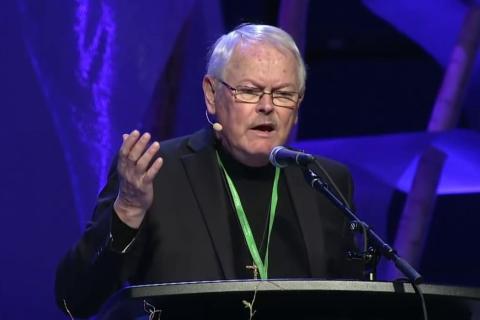
Photo by cittanuova.it
For those of us who lived at the time, the reform of the liturgy was the most visible outcome of the Second Vatican Council. Yet, the council was about a lot more than turning altars around and celebrating the Mass in the vernacular. It called for a mind shift in order to accomplish its stated goal of renewal.
The ecclesiology of the late Swiss theologian Hans Urs von Balthasar can give us an insight into one aspect of what this mind shift entails.
Balthasar looked at the Church in terms of two main principles or profiles: the Petrine and the Marian. The Petrine principle refers to the hierarchical structure of the Church, and the roles of Peter, the Apostles and their successors, the ministerial priesthood. The Marian principle refers to the universal call to holiness of all the baptized in imitation of Mary, the royal priesthood.
How does this link to the teachings of Vatican II?
In his annual address to the Roman Curia on December 22, 1987, John Paul II highlighted the portrayal of Mary offered by the council in the Dogmatic Constitution on the Church, Lumen gentium.
“The Mother of God is a figure of the Church… in the order of faith, of charity and of the perfect union with Christ.”
He then asserted that the Church lives with an authentic “Marian profile”; that is, the Church is what it should be when it is like Mary.
“Immaculate Mary precedes all others, including obviously Peter himself and the Apostles,” he added. “A contemporary theologian (i.e., Balthasar) commented, ‘Mary is ‘Queen of the Apostles’ without any pretensions to apostolic powers: she has other and greater powers.’”
Along the same lines, John Saward, summarizing Balthasar’s ecclesiology in his Mysteries of March, writes that for Balthasar, the center of the Church is not a clergyman, Peter, but a layperson, Mary. In fact, not all of us are called to the ministerial priesthood, but every Christian, including the clergy, is meant to be a disciple in imitation of Mary.
Saward goes on to quote Balthasar directly. “This femininity of the Church is all embracing, whereas the official service-role performed by the apostles and their male successors is merely a function within this all-embracing dimension.”
Pope Benedict XVI’s homily on the occasion of the creation of new cardinals on March 25, 2006 is also significant as he elaborated on this theme. “This providential circumstance [of the creation of new cardinals] helps us to consider today’s event, which emphasizes the Petrine principle of the Church, in the light of the other principle, the Marian one, which is even more fundamental…
“Everything in the Church, every institution and ministry, including that of Peter and his successors, is ‘included’ under the virgin’s mantle, within the grace-filled horizon of her ‘yes’ to God’s will.”
In his Commentary on the Magnificat, Martin Luther refers to Mary’s ardor and exuberant joy, trust and humility, praise and thanksgiving, tenderness and mercy. He could have been describing the characteristics of the Marian Church.
Faced with what appears to be a world gone mad, some Christians may be tempted to lose hope. The antidote is a Marian church in which, in imitation of Mary, “faith, charity and perfect union with Christ” are clearly manifested.
Some time ago, I came across a print of the image of Our Lady of Sheshan. Its uniqueness lies in the fact that Mary is not holding the child Jesus in her arms, but lifts him high up above her head. This beautiful image can serve as a powerful reminder of what the Church is called to become in the 21st century.
When looking at the Church, people should not see an archaic institution or a multinational or an NGO; they should see Mary who shows Jesus to the world.













